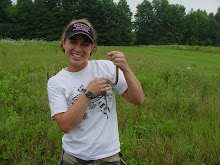Cocoa Impacts to Rainforests
- Coffee and sugar are the world’s most traded ag product – cocoa is #3.
- Cocoa beans come from a small understory rainforest tree.
- The trees are shade tolerant, and thrive in humid areas. Although the trees are very shade tolerant, farmers have cleared large sections of rainforests to allow for better access and to grow larger quantities of cocoa.
- Around 18 million acres of tropical land is used for cocoa farming. Five million farmers (most of them small farms) earn their livelihood off cocoa production. Many of these farmers do not receive fair wages for their crop and the working conditions are often very poor.
- There are several companies that sell rain forest certified organic/fair trade chocolate.
Coffee impacts to Rainforests
- US is the largest coffee-consuming nation on the planet, the United States purchases more than a fourth of the WORLD’s coffee
- Enormous amounts of rainforests are cleared for the production of coffee beans. Although the plants grow successfully in shade, the common farming practice utilizes sun tolerant plant species.
- Each commercial shrub produces at least a third more fruit than its shade-grown counterpart. From an economic sense, the sun-lover plants are better than the shade grown plants. The coffee from your favorite coffee joint was PROBABLY made from a bean that was grown in full sun.
- Sun-grown coffee usually requires heavy doses of pesticides and chemical fertilizers, many of which wind up polluting nearby water supplies.
- The ONLY method to ensure that the coffee you are drinking was made from a shade grown species is to verify the label from the coffee shop. Starbucks and Caribou do sell shade grown/fair trade/organic coffee. It is more expensive than the house brew. If you want a cup right away (instead of buying a bag to take home), you generally must ask for it to be pressed because they don’t generally sell it on the line.
Thoughts to ponder
- Take a minute to reflect on Jeffrey’s thought provoking blog about the “going green” movement. It's sometimes more expensive to make the "green" choice.
- There is no question that coffee consumption supports a rainforest destruction. This issue is not under debate - it's fact. The only issue to debate is how much we are willing to change our consumer behavior now that we are informed of the facts. Each time we drink a cup of sun grown coffee, we are likely supporting rainforest destruction and we might also be supporting poor working conditions for the farmers that harvested the beans.
- How much you would be willing to pay to drink a cup of coffee that was grown in the shade? Would you pay $1.00 extra? If it’s 5 a.m. and you need a jump start, would you be willing to skip you’re a.m. coffee if you knew that it was grown in the sun?
I struggle with these decisions each day. I am exposed to hard evidence about how my consumer behavior impacts the environment. Yet, there are times that I want to eat a Snickers or that I drink whatever coffee is available (hey once I start averaging over 100 hours a week, I slirp coffee like a mad woman).
I often make the wrong choice. Knowledge is sometimes a burden. The market is driving the agriculture. We control what’s happening.
US Agency for International Development http://www.usaid.gov/
Sustainable Tree Crop Program http://www.treecrops.org/




